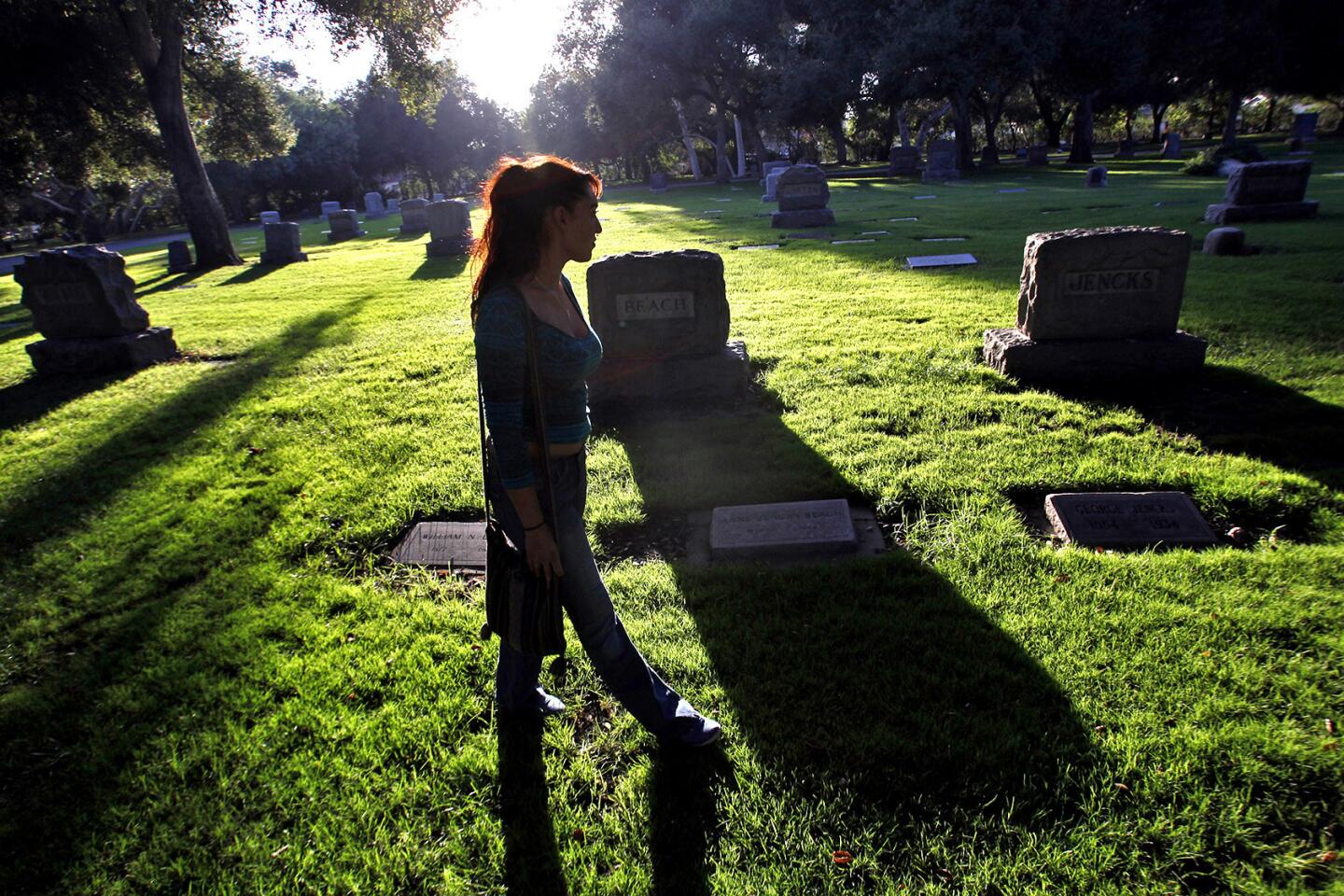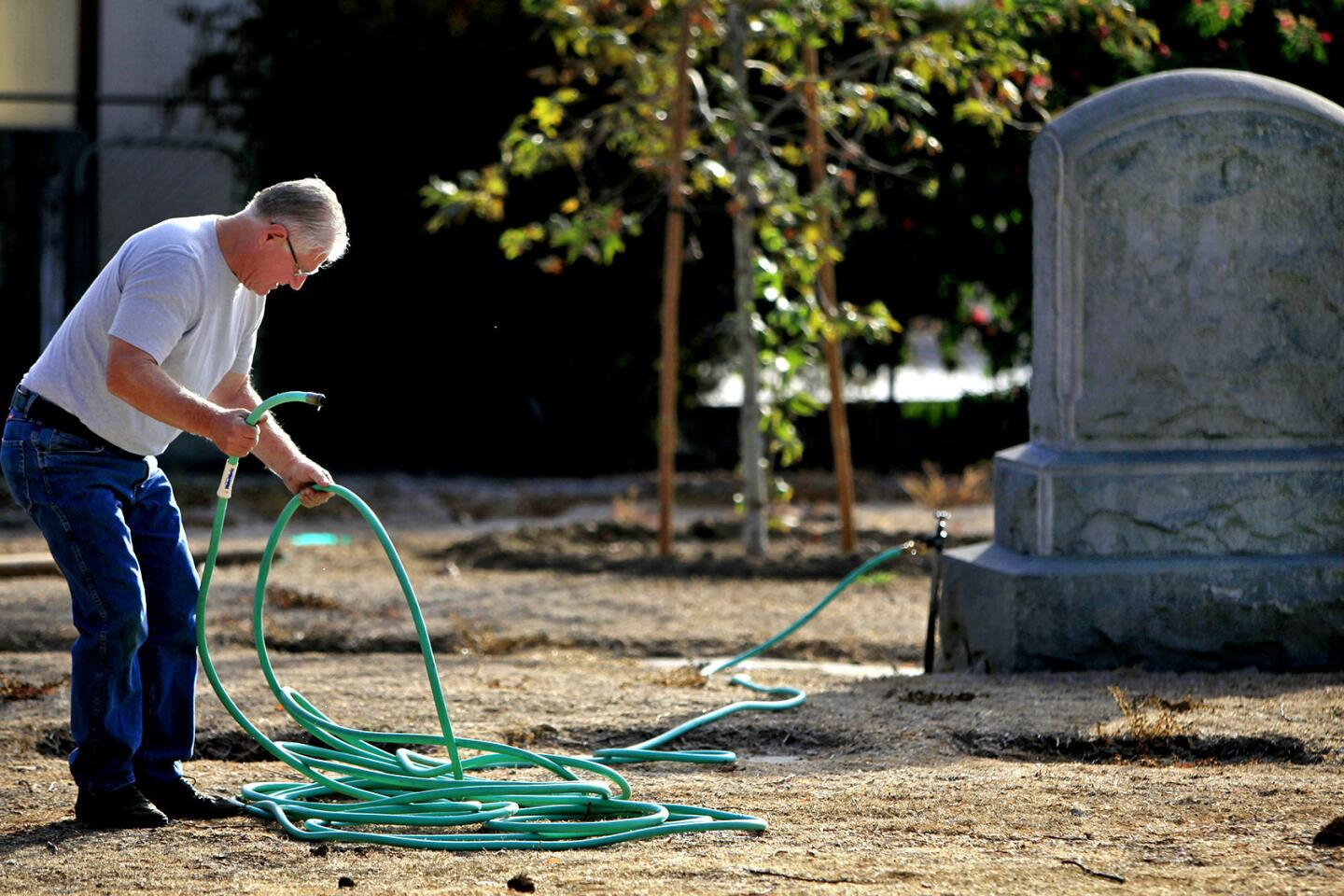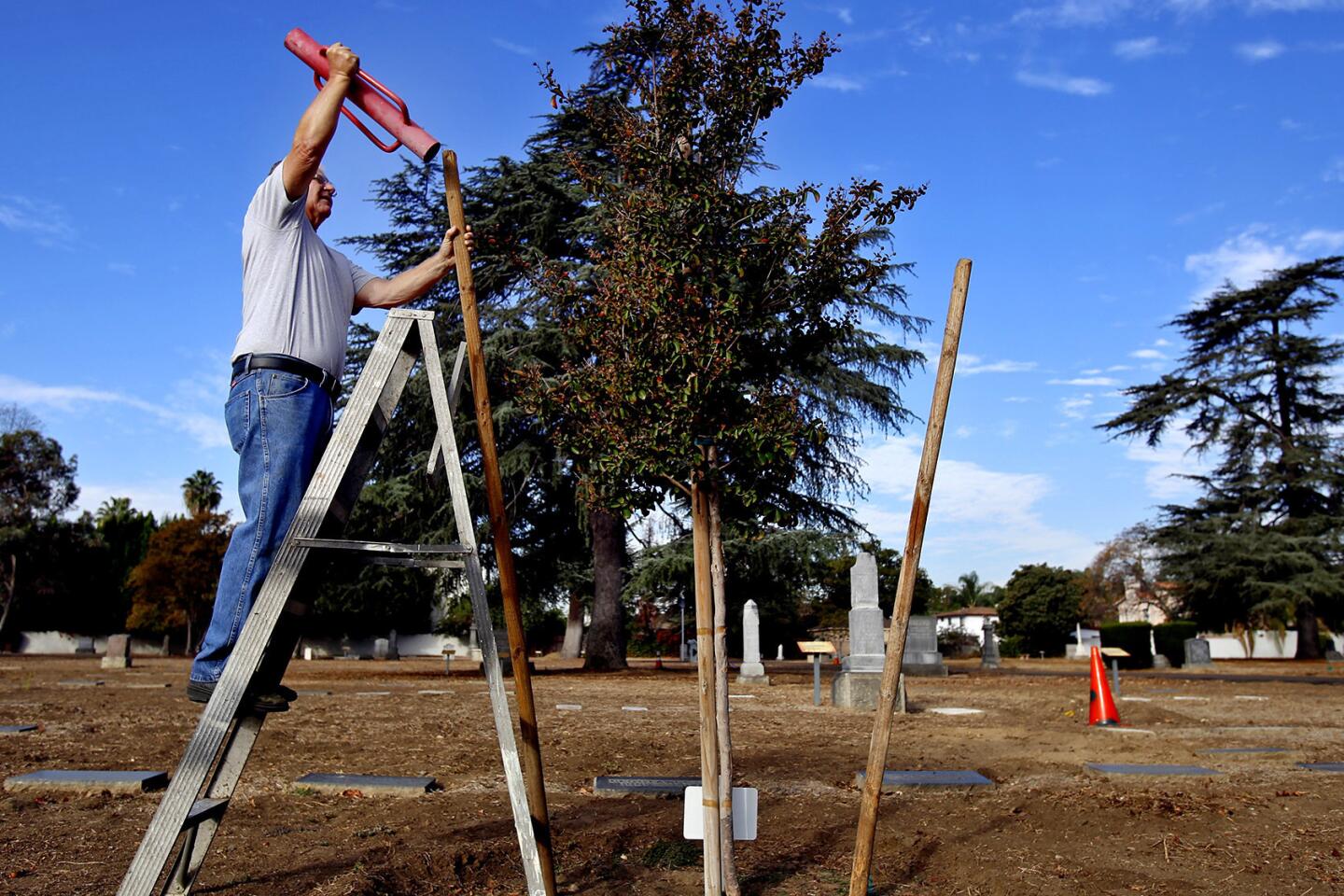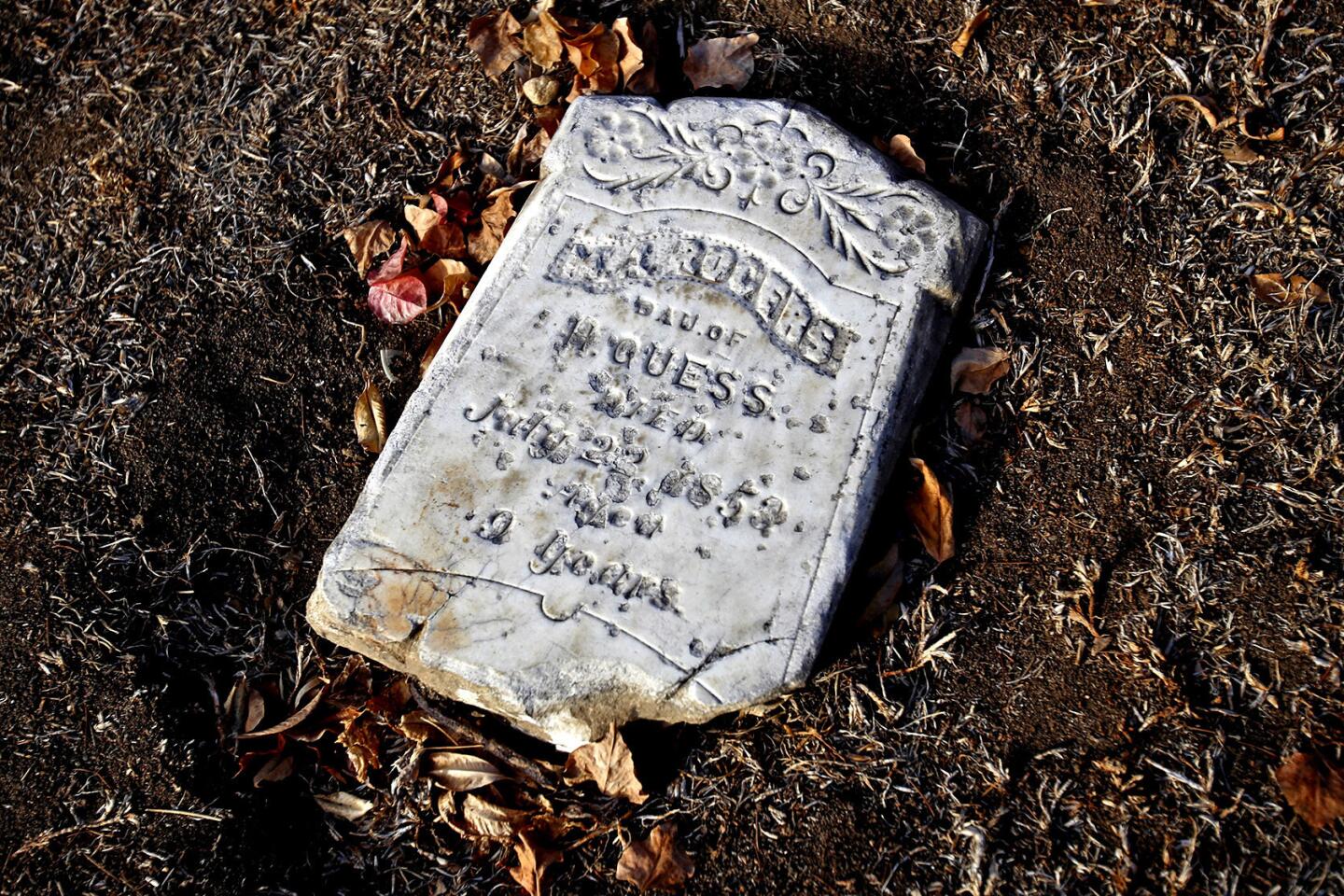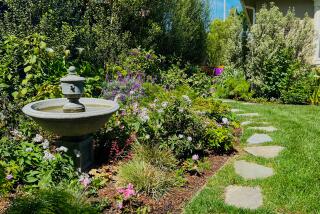Rosemead cemetery aims to be a model of drought-tolerant landscaping
Beverly and Jim Morten were happy to see it: rain washing over the gravestones at Savannah Memorial Park, pooling water in the shallow, rock-lined holes around crape myrtles they helped plant.
“Maybe this is going to be a good year for rain,” said Beverly Morten, 56, who along with her husband is a volunteer groundskeeper at the four-acre Rosemead cemetery. “But it could be dry for the rest of the season.”
On weekends, the Mortens are professional photographers, shooting weddings and family portraits in addition to baseball and other youth sports. But on those Thursday mornings when no rain is in sight, the husband and wife lug hoses through the dirt at Savannah Memorial Park, a cemetery founded during the 1850s.
Even with the recent rains, the landscape is in the midst of a revitalization of sorts as the California drought continues. A year ago, the El Monte Cemetery Assn., which runs Savannah Memorial, decided to severely cut back on water, a reaction to landscaping costs that rose faster than fundraising efforts. Deliberate rototilling and grass-kills soon followed to make way for a change in philosophy.
“We live in a semi-arid region, and we have to live within our means,” said Beverly Morten, a board member of the cemetery association. “Any changes we make now ... will keep us protected and help the state.”
The plan is to make Savannah Memorial an example of drought-tolerant landscaping. Mulch covers part of the cemetery’s grounds, and dwarf fescue, a low-water grass, will be added to a middle section of the cemetery. California native plants will be added to help the cemetery look much as it did during its early days in the mid-19th century.
As California’s water supply continues to decline, cemeteries across Los Angeles County are trying to balance conservation with the expectation that a loved one’s final resting place should be lush and inviting.
“People really expect a cemetery to be green,” said Mary Ann Barkey, 80, the first president of the Friends of Oak Park Cemetery preservation group in Claremont. “If the grass looks dry and brown around their family’s grave site, people do bring it up.”
Barkey and other members of the association inspect their cemetery monthly for signs of disrepair, such as crumbling headstones, too many decorations at a grave, or wilting grass. Despite high temperatures and little rainfall, Oak Park’s lawns are verdant, with just a few patches of brown. Barkey said her group has few complaints.
The state Cemetery and Funeral Bureau, which regulates the funeral industry, has no drought-specific rules regarding cemetery maintenance, so owners are free to choose their own plans of action.
One approach is using recycled water — wastewater that has been treated but not enough to drink.
At Whittier’s Rose Hills Memorial Park, which bills itself as the largest cemetery in North America, groundskeepers have used reclaimed water for years, but there are plans to convert the entire 1,496-acre property to recycled water by 2015, said Nick Clark, director of marketing and communications. The cemetery currently pipes reclaimed water through 60% of the property.
Recycled water comes with an additional benefit — lower bills. When Inglewood Park Cemetery began using reclaimed water in 1996, the price was $350 per acre-foot, said Kevin Brown, vice president of park operations and construction. An acre-foot equals about 325,851 gallons, enough to fill half of an Olympic-size swimming pool. At the time, the price for non-recycled water per acre-foot from the city was about $1,000, and well water was $638. The cemetery used a combination of both. Now, recycled water goes for $980 an acre-foot, though Brown said the alternative would probably be much higher.
Back in Rosemead, Jim Morten, 57, is on a ladder, attaching stakes to the young trees to keep them stable. A self-described “old-school environmentalist,” he beams when he talks about the changes at the cemetery.
“We can make this work,” he said. “We can make this water-efficient and beautiful at the same time.”
Or put another way by Reuben Ross, cemetery sales and services coordinator for Oak Park: “Cemeteries are for the living.”
More to Read
Start your day right
Sign up for Essential California for news, features and recommendations from the L.A. Times and beyond in your inbox six days a week.
You may occasionally receive promotional content from the Los Angeles Times.
